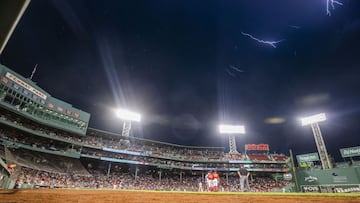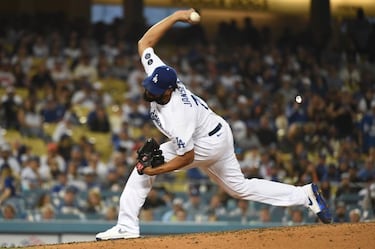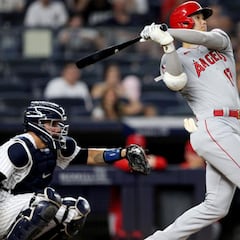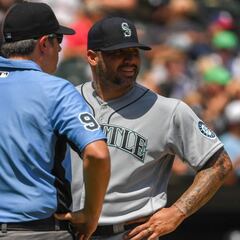Knocked down by a pandemic, Major League Baseball finds its feet again
With the coronavirus at bay and the dreaded Yankees in town, the 37,000 screaming, mostly maskless MLB fans of the hometown Boston Red Sox finally had something to hate more than the pandemic.

With the coronavirus at bay and the dreaded New York Yankees in town, the 37,000 screaming, mostly maskless Major League Baseball fans of the hometown Boston Red Sox finally had something to hate more than the pandemic.
After limits on attendance ended at 109-year-old Fenway Park in late May, the Red Sox drew middling crowds in the low 20,000s until the longtime rival Yankees made Friday, June 25, the stadium's first sellout since the fall of 2019.
"Fenway's back, definitely," said Matt Nelson, 29, who in swigging a beer with his father Mike before a June 28 game against the Kansas City Royals, presented an idyllic image of a normal summer for America's national pastime.

How normal?
No-masks normal, a blessing in the 93-degree Fahrenheit (34 Celsius) heat, with evidence also developing of a retail rebound among the businesses that collect near Fenway and other sports arenas.
But not yet a full recovery. Despite the buoyant mood at the Yard House bar and restaurant near Fenway, "it's sad," said Mike Nelson, noting that nearby Boston Beer Works remained closed while Bar Louie's space was for rent.
Both are casualties of a health crisis and recession that exacted a toll even on prime real estate like Brookline Avenue near one of the country's most fabled sports venues.
ALL OUT. pic.twitter.com/CeQxnq0duu
— Red Sox (@RedSox) July 1, 2021
'They want to spend money'
Still, things are heading in the right direction as the impact of vaccinations erases the remaining pandemic restrictions and promises a torrent of spending on activities that have been off limits for a year.
Last summer Major League Baseball had not even started its season on July 4 due to the pandemic, and when a truncated season did begin on July 23 no fans were allowed.
Vaccinations have since driven case rates so low that all of the league's U.S. ballparks will be open at full capacity by July 5, earlier than league officials expected when the season opened on April 1 with 20% attendance limits in most places.
MLB chief revenue officer Noah Garden said as the season opened he thought it was "50-50 at best" that restrictions would be gone this fast.

Now, noting a 50,000-plus crowd at a recent Los Angeles Dodgers game, he said he was cautiously optimistic league-wide attendance would match or surpass 2019 averages for the second half of the season. Fans, meanwhile, are spending more money inside the stadiums to update team hats and other gear.
"In April we all recognized there was pent-up demand," Garden said. "It has just accelerated. ..It is not only people wanting to get out - it is a year since they have been out. ..They want to spend money."
Ticket sales have "begun to return to pre-pandemic levels. We are seeing this trend continue across all of our remaining games," said Mike Carney, the Washington Nationals executive vice president of business operations and strategy.
League-wide game attendance for the seven days through June 29 was about 86% of the league-wide average for 2019, evidence there is room for the rebound to grow.
That assumes the pandemic remains under control. Case counts have stopped declining with the emergence of a more easily spread variant, and the pace of vaccinations has slowed and remains low in some states.
Signs are nonetheless encouraging that people are still willing to pay to stand and sit next to strangers.
The one stadium that has allowed full attendance since April 1, the Texas Rangers' Globe Life Field, has exceeded its 2019 average attendance through May and June despite a losing, last-in-its-division record.
"Venue operators did their due diligence and homework," accommodating social distancing rules at first, moving to contactless entry and payments, and making other changes, said Patrick Rishe, director of the sports business program of the Olin Business School at Washington University in St. Louis.
"They knew that one of the things they had to fight was fan aversion to placing yourself in harm's way."

Attendance at basketball, hockey and other arenas is showing the same, he said.
'Pretty much back'
Slowly, people are returning to retail zones dependent on events. The U.S. gymnastic trials in St. Louis, for example, sparked a sellout weekend for downtown hotels. Cellphone data from analytics firm Unacast shows foot traffic in areas around Fenway, St. Louis's Busch Stadium, and Washington, D.C.'s Nationals Park still low compared to 2019, but edging higher.
At the Red Sox Corner Store near Fenway on Monday night, manager Terry McCann said souvenir sales rivaled those of the 2018 World Series title season.
"We are pretty much back at pace," McCann said. The nearby Wahlburgers restaurant on Brookline Avenue had a 30-minute game-night wait for a table. That was fine by Emily Mayer, 42. Having previously limited her time in public despite being vaccinated, she felt seeing a Red Sox game in person was "worth it" in terms of the extra risk.
Related stories
"It definitely feels good being around people," Mayer said. Patty Paulauski, the restaurant manager, would second that. She estimated the restaurant's sales had been about 20% below 2019 levels, but the past weekend showed the summer's promise.
"Red Sox-Yankees? That helps, oh yeah," she said. "Business is definitely picking up."

